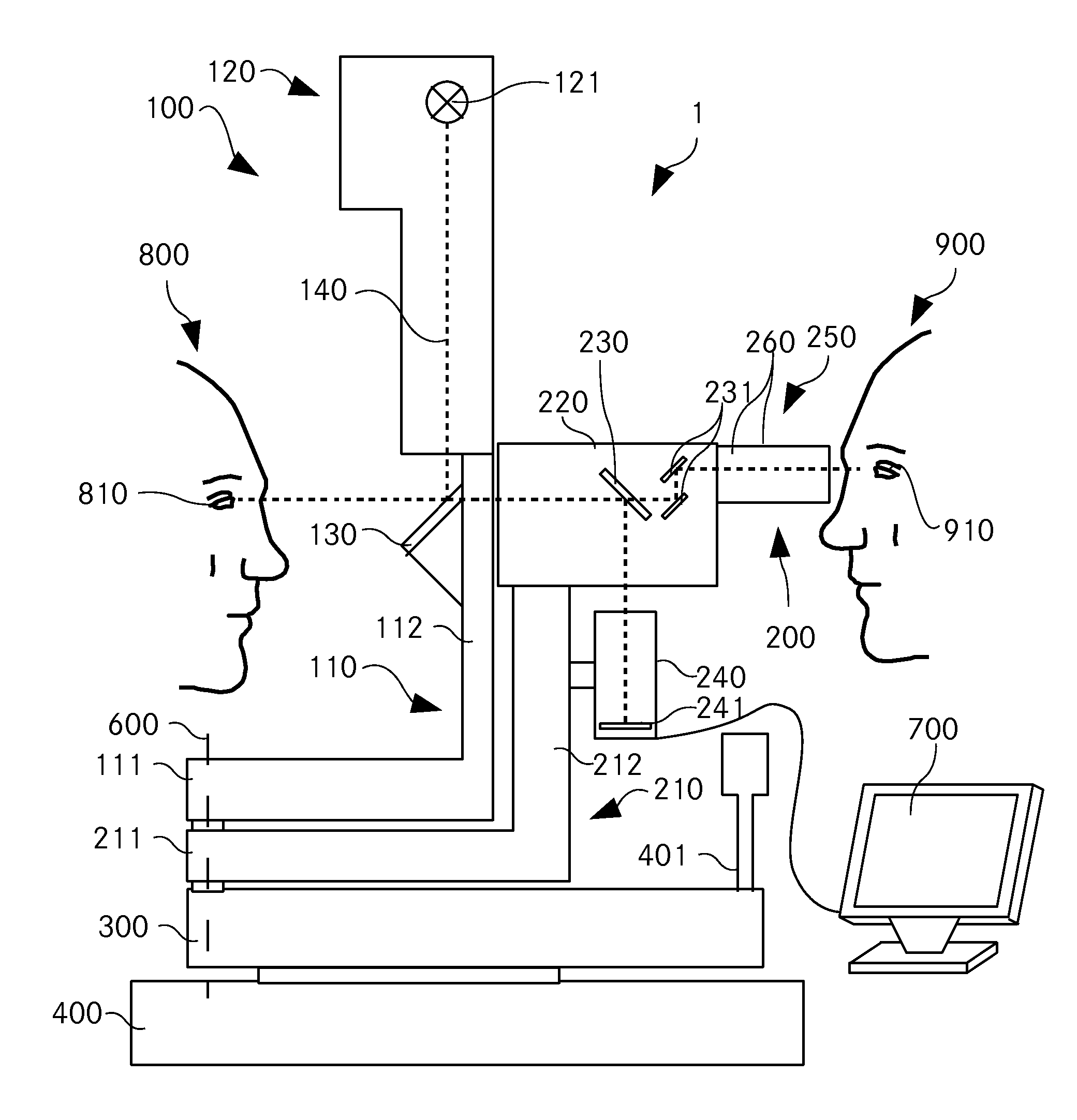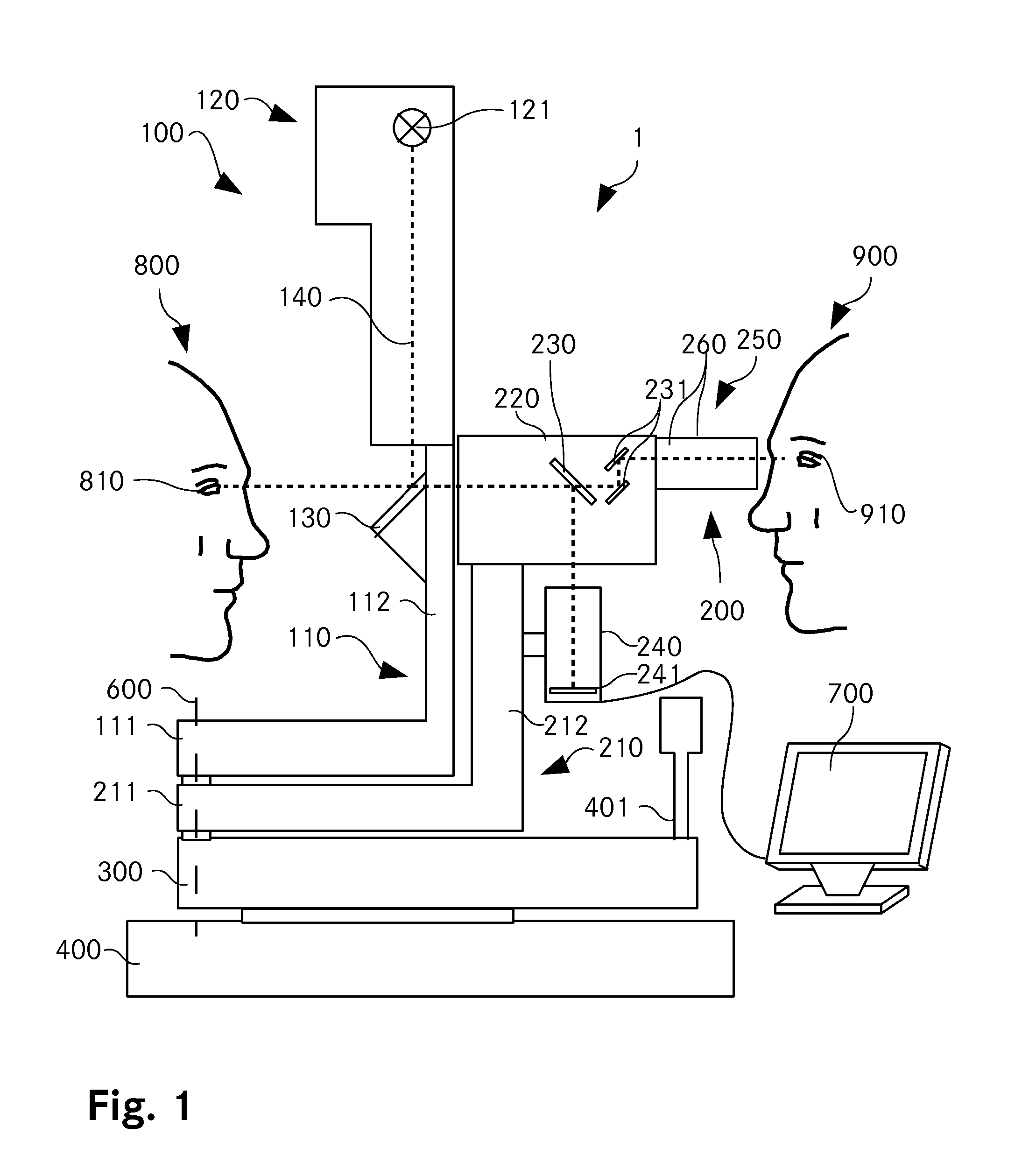Eye examination apparatus with digital image output
a digital image and eye examination technology, applied in the field of eye examination equipment, can solve the problems of inexpedient positioning inconvenient coordination for the examining person, and inability to observe via a screen during the examination
- Summary
- Abstract
- Description
- Claims
- Application Information
AI Technical Summary
Benefits of technology
Problems solved by technology
Method used
Image
Examples
first embodiment
[0048]FIG. 1 shows a schematic illustration of a side view of a device for examining an eye;
[0049]FIG. 2 shows a simplified sectional illustration through the optical unit and the image rendering unit of a device according to the invention for stereoscopically examining an eye;
second embodiment
[0050]FIG. 3 shows a device according to the invention as per a first aspect of the invention;
third embodiment
[0051]FIG. 4 shows the device according to the invention in a side view; and
[0052]FIG. 5 shows an observation unit as an element detached from the microscope.
[0053]In principle, the same parts have been provided with the same reference signs in the figures.
[0054]Ways of Implementing the Invention
[0055]The term light ray used in the following text should not be understood as being restricted to a single light ray or to a photon; rather, it should also be understood to mean a light wave beam, which can represent an image.
[0056]FIG. 1 shows a device 1 for examining an eye, embodied as a slit lamp 1. The slit lamp 1 comprises an illumination unit 100, an optics part 220, an observation unit 200 which are mounted on a cross slide 300.
[0057]The cross slide 300 itself is mounted on a base plate 400, which can be embodied as a tabletop, and can be displaced in the x-, y- and z-directions. The slide 300 can be controlled by means of an operating element 401, which is arranged on same. Using ...
PUM
 Login to View More
Login to View More Abstract
Description
Claims
Application Information
 Login to View More
Login to View More - R&D
- Intellectual Property
- Life Sciences
- Materials
- Tech Scout
- Unparalleled Data Quality
- Higher Quality Content
- 60% Fewer Hallucinations
Browse by: Latest US Patents, China's latest patents, Technical Efficacy Thesaurus, Application Domain, Technology Topic, Popular Technical Reports.
© 2025 PatSnap. All rights reserved.Legal|Privacy policy|Modern Slavery Act Transparency Statement|Sitemap|About US| Contact US: help@patsnap.com



